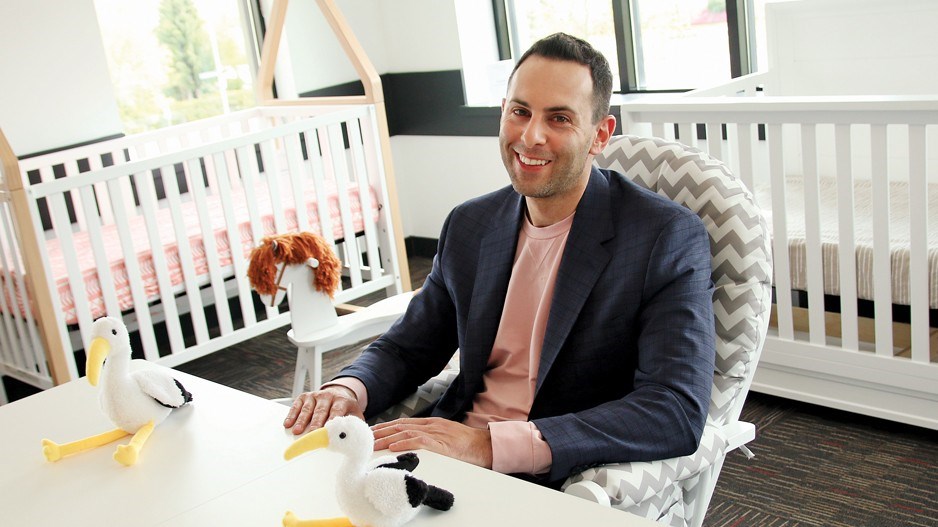While a higher Canadian dollar is usually seen to be negative for B.C. manufacturers and exporters, there are factors at play that are buffering blows to balance sheets.
Adam Segal’s Storkcraft manufacturing company, for example, has been able to take in stride the Canadian dollar’s rise to three-and-a-half-year highs near US$0.83. The increase is being driven in part by a global economy that is running on all cylinders despite the COVID-19 pandemic, and intensifying demand for copper, oil, lumber and other commodities produced in Canada.
Consumers, many of whom have been able to save money during the pandemic, are shopping for discretionary items, including the baby furniture that Segal’s Richmond company makes.
“We're seeing very substantial inflation,” billionaire investor and Berkshire Hathaway (NYSE:BRK.B) CEO Warren Buffett said at his annual shareholders meeting earlier this month. “We’re raising prices. People are raising prices to us, and it’s being accepted.”
Segal agreed. He has seen inflation for wood, rubber and other raw materials he needs to produce Storkcraft’s dressers, cribs and mattresses. Transportation costs on freighters have also jumped.
Indeed, the industry newsletter Madison's Lumber Reporter noted that two-by-fours made from Western spruce, pine and fir sold last week for a record US$1,640 for 1,000 board feet, up 355% from a year ago.
"We have already raised our prices, but we're not able to pass all of that [price increase] through to the customer," Segal said.
But even though his profit margins are shrinking, he said increased sales are more than compensating for any currency loss.
Segal has business in his blood. He is the son of Kingswood Capital Corp. vice-president Gary Segal and the grandson of the family patriarch and Kingswood Capital president Joe Segal, who at 96 years old is in good health, Segal told BIV.
Since he became Storkcraft’s CEO in 2017, he has nearly doubled the company workforce in Richmond to 60. He aims to double annual sales – now in excess of $150 million – by 2026.
Segal added an e-commerce component to Storkcraft’s website, although most sales remain wholesale – to retailers such as Amazon.com Inc. (Nasdaq:AMZN), Walmart (NYSE:WMT) and Target (NYSE:TGT).
Storkcraft’s sales were primarily in Canada 15 years ago. Now, about 95% are in the U.S., and Segal is looking into global expansion.
Because the company’s raw material costs and sales are mostly in U.S. dollars, Storkcraft’s costs increase when its proceeds are converted into higher Canadian dollars to pay employees in Richmond.
Less than a decade ago, the Loonie was hovering around par with the U.S. dollar.
So while a Canadian dollar above the US$0.82 mark is a significant change from the US$0.75 range it held to through much of 2019, the higher value is far from unmanageable, say economists.
And the demand for Canadian commodities could push the Canadian dollar higher still, as foreign buyers purchase Canadian dollars to buy these products.
“Commodities – natural resource products – are 50% to 55% of Canada’s international goods exports, and closer to 75% of that in the case of B.C.,” said Jock Finlayson, senior policy advisor at the Business Council of British Columbia.
“We’re a big commodity producer, and a very strong up-cycle is clearly going to benefit Canada.”
Leith Wheeler Investment Counsel Ltd. CEO Jim Gilliland said other reasons for the Canadian dollar’s rise include the Bank of Canada saying in April that it could start to raise interest rates by late 2022, and that it has pared back its bond-buying.
U.S. Federal Reserve chairman Jerome Powell, in contrast, has sounded as though he will be more willing to buy bonds and more reluctant to raise interest rates.
Higher Canadian interest rates would lead to a higher dollar because they attract international capital, as investors seek to generate higher rewards. In the process, investors buy Canadian dollars.
Government bond buying keeps bond prices elevated, and yields lower, thereby deterring an international capital inflow.
Unlike some who believe we are on the cusp of a commodities supercycle, Gilliland said he thinks that the commodity boom is temporary, and caused more by supply-chain disruptions and the sudden reopening bonanza that has manufacturers scrambling for goods.
"It will probably subside over the next six to 12 months," he said.
"But that is something that could in the very near term continue to cause Canadian dollar strength even if the interest-rate differential [with the U.S.] has run its course." •




